
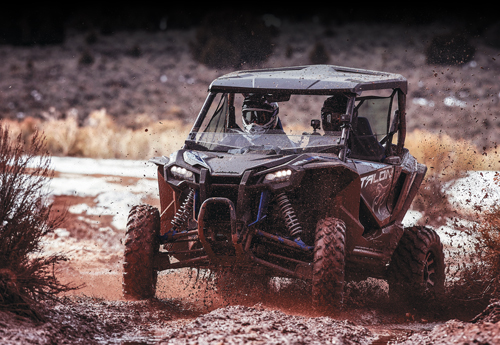
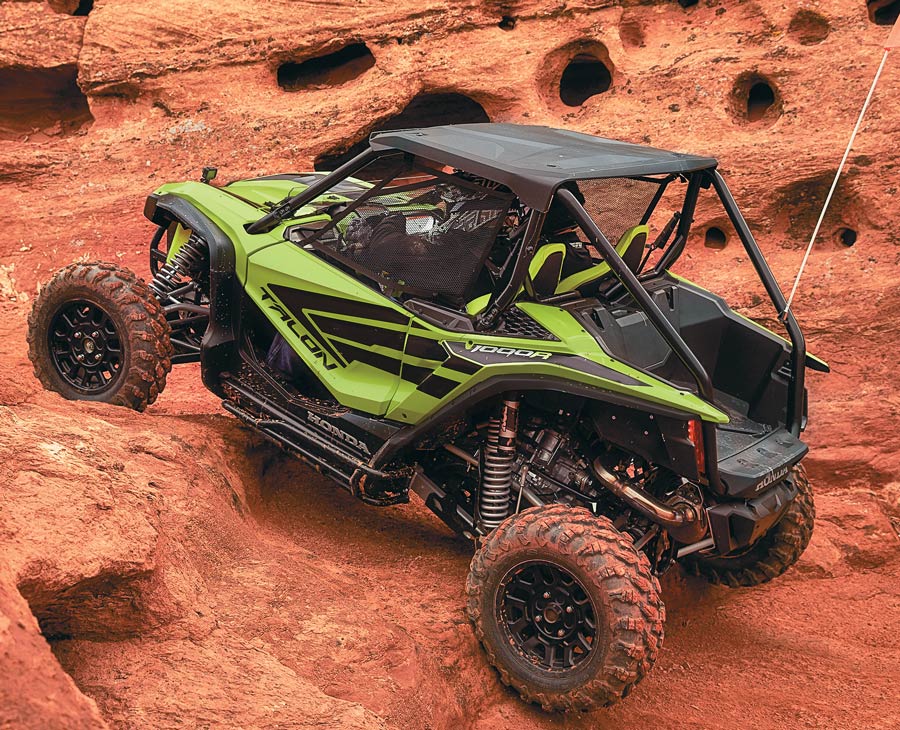
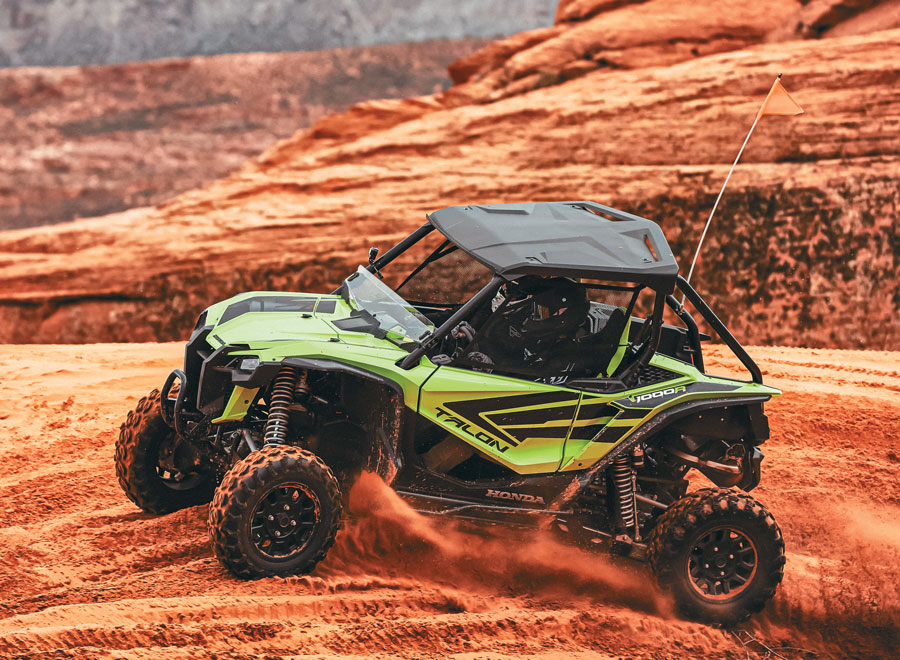
Is it us or is the sport side-by-side segment all of a sudden getting crowded?
Honda, as you know by now, is the latest powersports manufacturer to jump into the sport side-by-side segment and looks to make an immediate impact.
Can the new Talon X and Talon R do that?
Heck, yes. And here are nine reasons why.
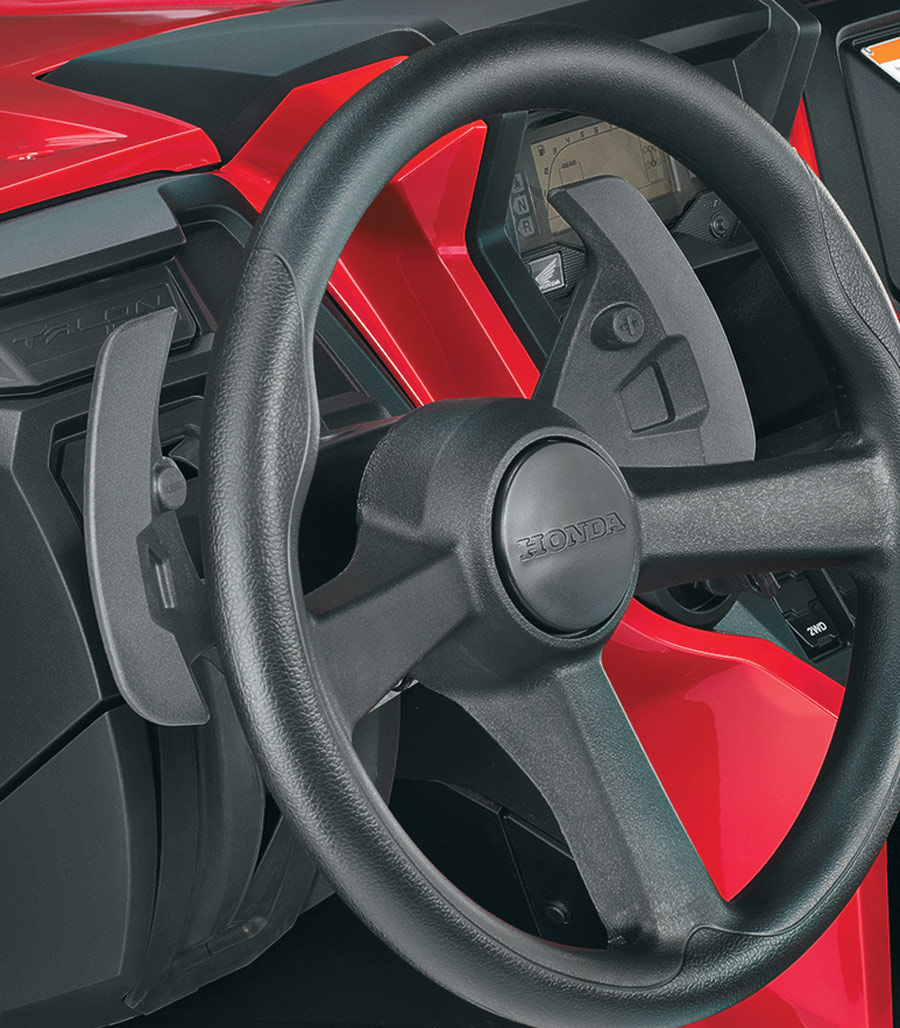
This is Honda’s ace in the hole in the sport side-by-side segment. It seems most manufacturers have that one or two features that help set them apart from the crowd. DCT is Honda’s.
DCT isn’t new to Honda powersports vehicles but it gives the driver more options than other sport side-by-sides. The six-speed DCT offers two automatic modes—Drive and Sport—as well as the opportunity to use manual, where the driver changes gears using paddles attached to the steering wheel column. Pull on the right paddle to upshift and on the left to downshift.
Even when you’re driving in the automatic transmission (AT) mode, you can override that by pulling on one of the paddles. Say, for instance, you’re going a little too hot into a corner and want to use the transmission to help slow you down more. Simply pull on the left paddle to downshift. Or, if the AT is not as quick as you’d like coming out of a turn, pull on the right paddle.
And going from AT to MT or back again, simply press the toggle button on the dash. While there is an MT option, there is no clutch to worry about depressing when shifting up or down while in MT.
And if you want to push the vehicle just a bit more, run it in Sport mode, which changes the shift points change at a higher rpm.
Some might not like the automotive-like feel of the DCT. We admit we prefer the MT because we feel more engaged in the driving of the Talon. However, we “forced” ourselves to use AT on the day we mostly rode trails in the Talon X, just to get a better feel for how it works. We did use the paddle shifters to override the AT a few times, but mostly stayed in AT. It does work great and the Sport mode indeed has the AT shifting at a higher rpm.
It was pointed out to us that the Talon’s DCT has a 50 percent shorter shift time than the Pioneer 1000, which makes sense since you’re going to drive the Talon more aggressively than the Pioneer.
It is a great system and one that ramps up the fun of the Talon (and other Honda powersports vehicles).
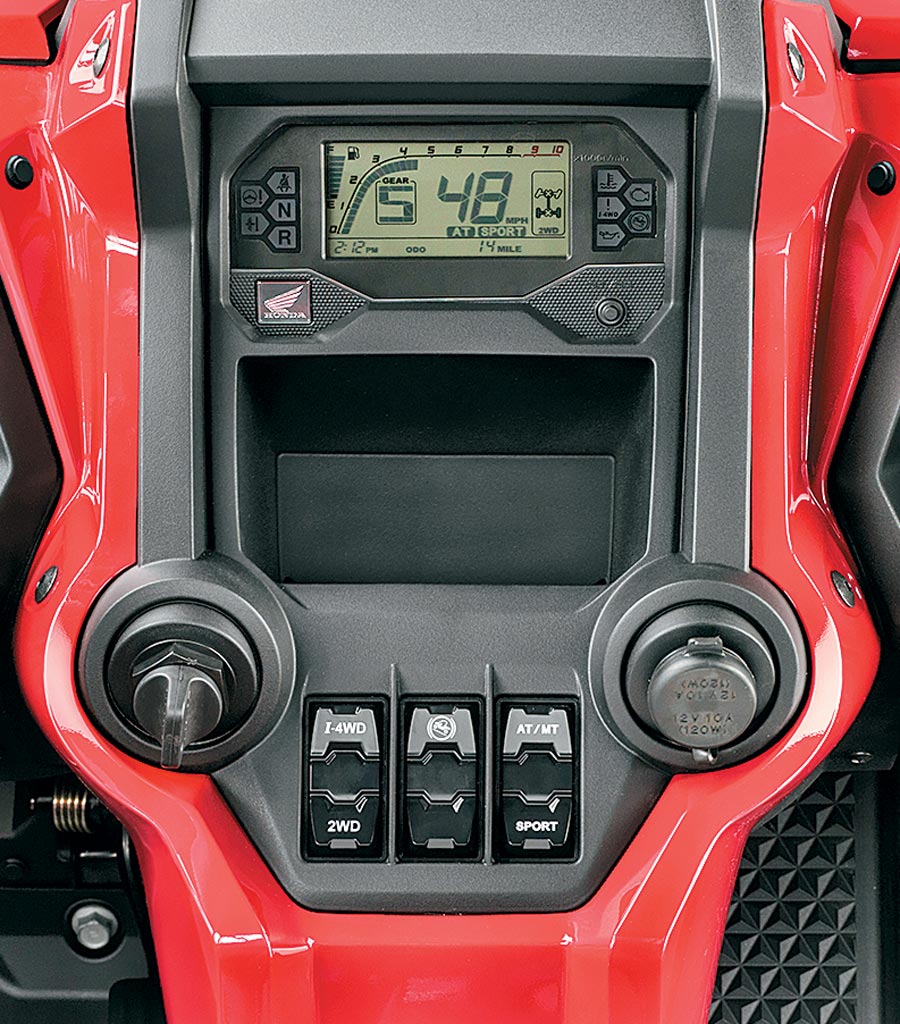
Another interesting piece of innovation on the Talon (and Pioneer 1000) is Intelligent 4WD. The system manages the amount of slip between the front wheels, applying torque to the wheel with greater grip. If one wheel is spinning in mud or snow or just spinning in the air while rock crawling, but the other tire has traction, the brakes on the spinning wheel engage and I-4WD multiplies that brake force be a preset number, transferring that force to the wheel with the traction, giving it more torque.
Where we noticed this feature the most was while riding in Sand Hollow State Park in the rock section, where we did, indeed, have a spinning wheel (maybe more than once) while rock crawling.
Okay, so maybe this feature wouldn’t be on most folks’ top 10 list, but until you try it, you don’t know just how good it is. We tried it a half dozen times in various conditions and it is such a sweet little feature.
We’ve never really had an issue starting from a dead stop while on a hill. But apparently it scares a few people who drive in CVT-equipped vehicles and the vehicle rolls back a bit before heading up the hill when gas is applied.


We’ve long been fans of the Quick Switch 3 shocks with dual rate springs from Fox. Perhaps the biggest attraction is how easy it is to switch from one setting to another. There is something to be said for shocks that offer more setting options (multiple clicks) for more fine, but tuning but for the majority of riders who will drive the Talon X (2.0-inch body) or Talon R (2.5-inch body), the three settings will cover most riding conditions and terrain.
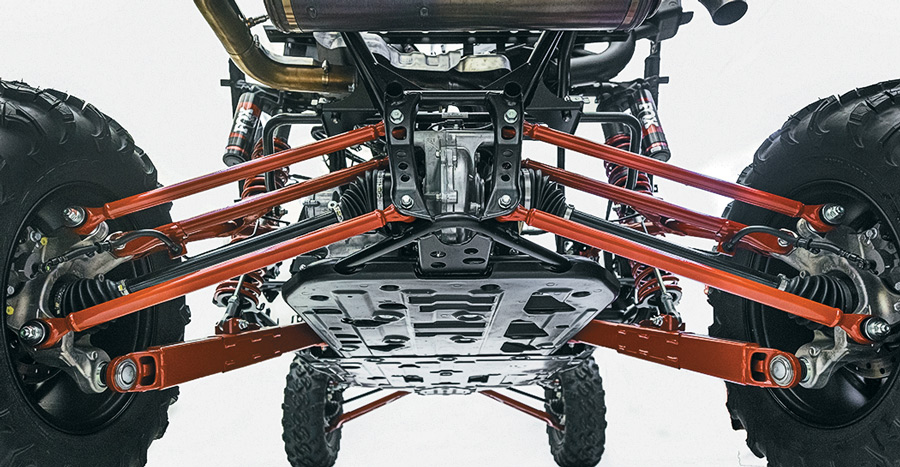
This is one of the areas that separate the Talon X and Talon R (see sidebar). Where the X has a 3-link trailing arm in the rear, the R has a 4-link. That not only helps the Talon R stay planted but ensures it stays pretty darn straight in the whoops as well. The 4-link trailing arm helps control toe change throughout the stroke—control that Honda officials say, limits toe change to only 0.3 degrees through the entire length of travel.
What that translates into is you can attack the whoops with speed and not have to worry about the back end getting happy. We carried some insane speed through one section of whoops in Sand Hollow and the Talon R not only soaked them up but stayed true.
Travel in the front is 14.6 inches on the Talon X and 17.7 inches on the Talon R. In the rear the X has 15.1 inches of travel and the R 20.1 inches.
We detailed the differences between the Talon X (think trails) and wider Talon R (think high speed desert riding, rock crawling) in the sidebar.
Just do a little homework, be honest about where the majority of your riding takes place and you’ll be able choose a Talon.
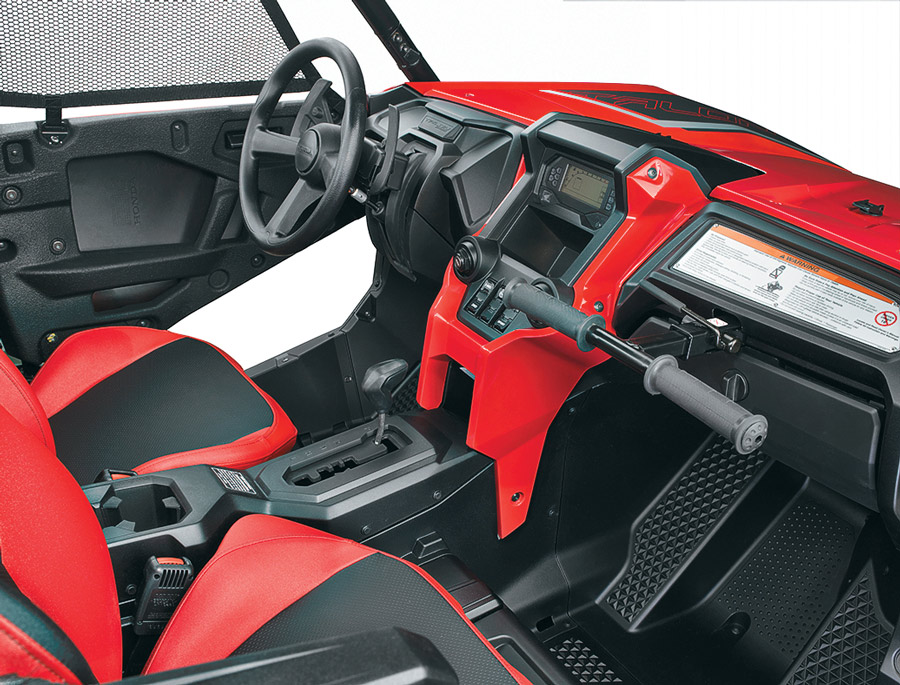

The whole package from the doors (although we wish they didn’t have those pesky nets) to the comfortable bucket seats (driver seat is adjustable) to the adjustable steering wheel to the decent amount of storage to easy to read gauges and easy-to-switch settings (I-4WD, AT/MT, etc.) is well thought out and very user friendly.
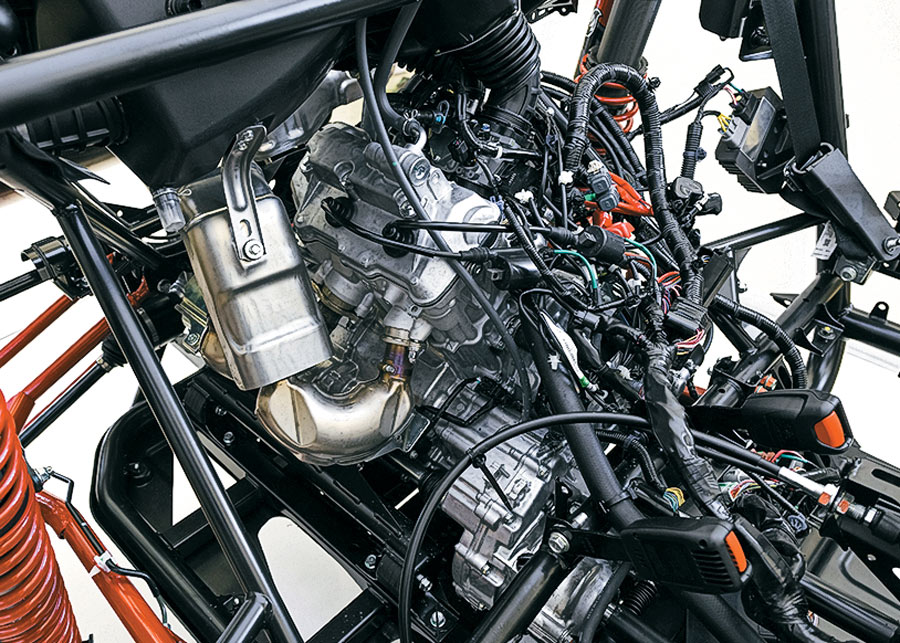
So we put the engine at No. 9? Well, we weren’t intending to rank our nine reasons in any particular order so having the engine here doesn’t mean it’s way down on our list. The 999cc four-valve Unicam inline twin powerplant offers up a claimed 104 hp. That puts the Talon at the lower end of the claimed horsepower of its sport side-by-side competitors.
It’s the same powerplant as the Pioneer 1000 but you can definitely tell the Talon has more spunk and handled very well all we threw at it over two days of trails, sand and rocks. The uptick in power vs. the Pioneer is thanks to larger throttle bore (9 percent over the Pioneer) and bigger fuel injectors (18 percent bigger).
The Talon’s horsepower number is not a deterrent to us as we think the power matches the vehicle well.
The price tags on the Talon X ($19,999) and the Talon R ($20,999) are very competitive. These prices will turn heads as they are right there in the mix, generally within a few bucks of their competitors. You can go feature-by-feature comparing the Talons to the competition but let’s go back to the DCT. How much is that worth compared to a CVT system? And the i4WD, how much is that feature worth? And the Talon comes stock with a roof.

While the two Honda Talons share many of the same features, there are some key differences, mostly in the suspension.
As a reminder, the X is designed for trails—especially tight trails—thanks to its narrow design and can handle tough stretches of terrain that includes rocks, roots, creek crossings, mud and snow (which we found out first-hand). The R, meanwhile, is for those who ride the desert with big whoops, dunes and other open areas—and hitting all those places at speed.
Here are the common features between the X and R:
- 999cc Unicam parallel-twin engine, performance-tuned for strong torque and linear power delivery
- 6-speed Dual Clutch Transmission (DCT) with high-low sub-transmission and automatic and manual modes
- Ignition Feedback Control for faster gear changes
- On-the-fly changing between 2WD and 4WD via dash-mounted switch that operates at any engine speed
- Electronic Brakeforce Distribution (EBD) for stability under braking
- Brake Traction Control System (BTCS) directs torque to wheels that have the most grip
- 44 percent front weight bias for balanced handling
- Center console and creature comfort dual cockpits
- Tuned intake and exhaust for performance and sound quality
- Hill Start Assist (HSA)
- Piston oil jets for cool engine temperature and engine longevity
- Oversized radiator and fan
- Driveshaft boot protectors
- Comfortable, weather-resistant supportive seats
- Clutch temperature warning light
- LED headlights with high/low beam DT
- Double-wishbone front suspension, Fox Podium 2.0 shocks with Quick Switch 3, 14.5 inches of travel
- 3-Link rear suspension with high-clearance trailing arm, Fox Podium 2.0 shocks with Quick Switch 3, 15 inches of travel
Colors
- Red/Gray with red suspension accents
- Gray/Blue with silver suspension accents
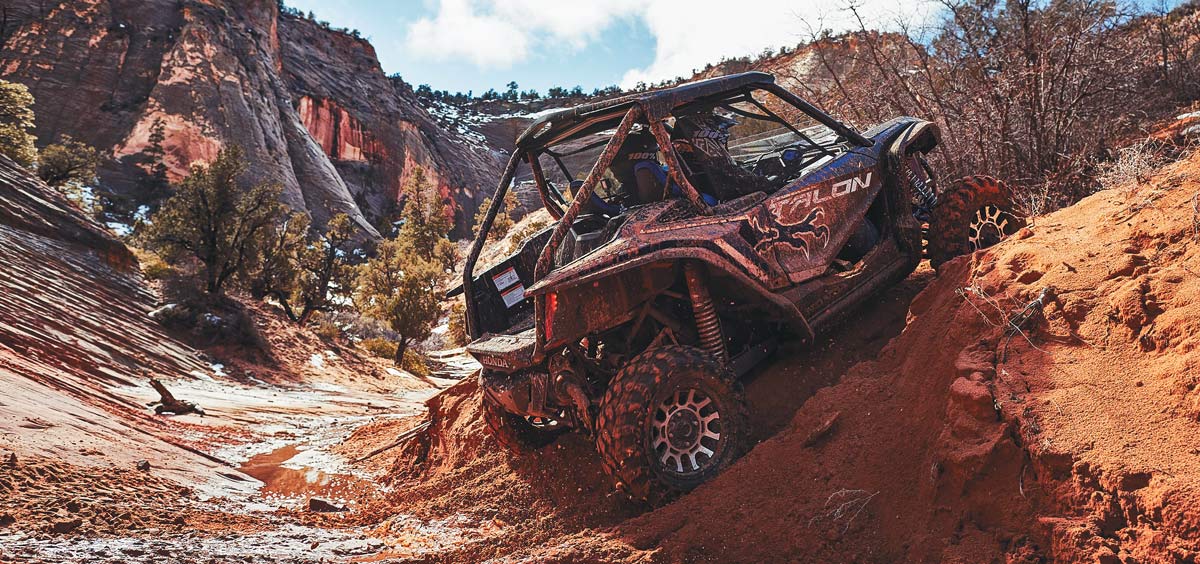
- Double-wishbone front suspension, Fox Podium 2.0 shocks with Quick Switch 3, 14.5 inches of travel
- 3-Link rear suspension with high-clearance trailing arm, Fox Podium 2.0 shocks with Quick Switch 3, 15 inches of travel
Colors
- Red/Gray with red suspension accents
- Gray/Blue with silver suspension accents
- Double-wishbone front suspension, Fox Podium 2.5 shocks with Quick Switch 3, 17.7 inches of travel
- 4+ Link trailing-arm rear suspension with toe link, Fox Podium 2.5 shocks with Quick Switch 3, 20.1 inches of travel
Colors
- Red with red suspension accents
- Green/Silver with silver suspension accents
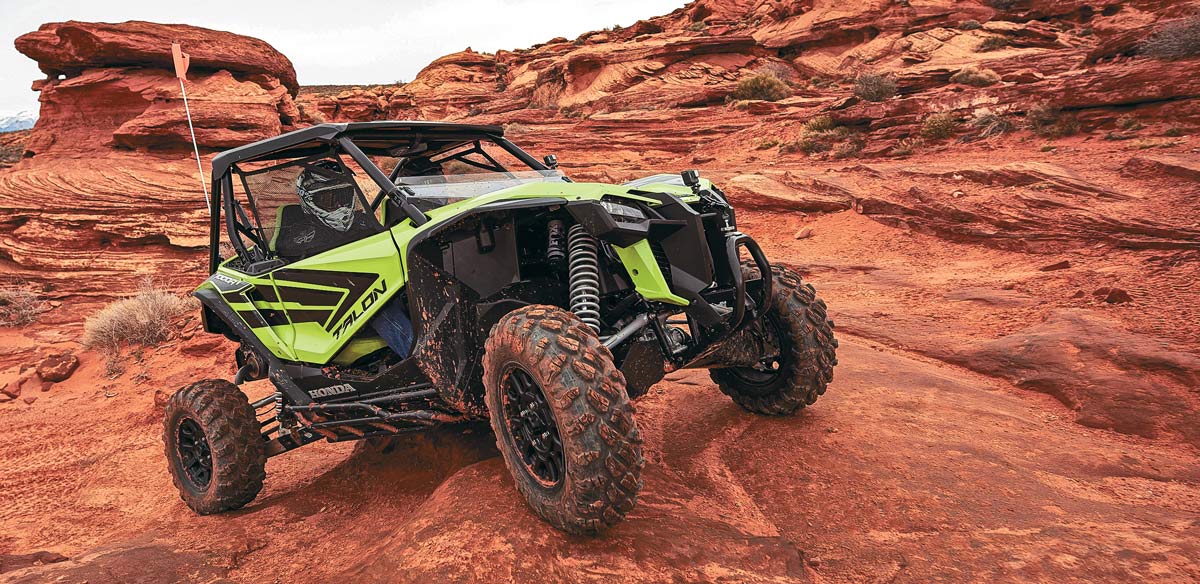
- Double-wishbone front suspension, Fox Podium 2.5 shocks with Quick Switch 3, 17.7 inches of travel
- 4+ Link trailing-arm rear suspension with toe link, Fox Podium 2.5 shocks with Quick Switch 3, 20.1 inches of travel
Colors
- Red with red suspension accents
- Green/Silver with silver suspension accents